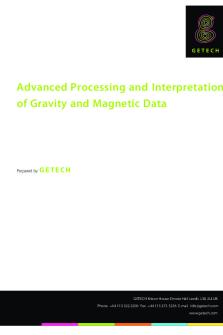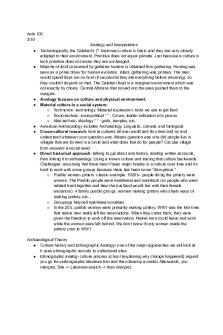Radiographic Assessment and Interpretation PDF

| Title | Radiographic Assessment and Interpretation |
|---|---|
| Author | ahmed amr |
| Course | oral radiology |
| Institution | جامعة الشارقة |
| Pages | 48 |
| File Size | 2.5 MB |
| File Type | |
| Total Downloads | 14 |
| Total Views | 161 |
Summary
Download Radiographic Assessment and Interpretation PDF
Description
Radiographic Assessment and Interpretation
MULTIPLE CHOICE QUESTIONS WITH FIGURES Instructions Look at the illustration and read the questions carefully. The reader should be wary of selecting the longest answer or the “C” choice. On the other hand, some of the correct answers are the longest or “C” choice. The same letter choice may occur several times in a row. Check your selection with the correct answer in the Answer Key at the back of the book.
2. This patient is a 60-year-old man with markedly shortened crowns. He does not work in an environment where particulate matter or acid-containing fumes can pollute the air. He has no known eating disorders and is healthy systemically. By what process have the crowns acquired this appearance? A. Attrition B. Abrasion C. Erosion
1. Select the most appropriate term for the anomaly associated with the 1st (most mesial) molar. A. Diastema B. Concrescence C. Dilaceration D. Dens invaginatus
D. Abfraction
3. Observe the bifurcation area of these three molars. All have the same round, radiopaque, anomalous appearance. Note the overlap of the contacts. What term best describes this? A. Enamel pearl
B. Pulp stone C. Buccal enamel defect D. “Faux” enamel pearl
4. We can see at least two errors in this image. Which do you think they are? A. Rectangular BID cone-cut and film bending B. Rectangular BID cone-cut and static electricity C. Lead apron and static electricity D. Lead apron and film bending
5. At least two errors are in this edentulous maxillary posterior periapical view. Select the best choice. A. Improper horizontal and vertical angulation of the beam B. Excessive vertical angulation of the BID and round BID cone-cut C. Excessive vertical angulation of the BID and bent film in the processor D. Round BID cone-cut and excessive distal angulation of the BID
6. One major error is in this radiograph. What is the cause? A. Foreshortening B. Elongation C. Improper horizontal angulation of the BID D. Excessive negative vertical angulation of the BID
2 6 7
7. The correct term(s) that best describe(s) the radiopaque objects is (are): A. Implants B. Implants and appliances C. Implants, appliances, and crowns D. Screw-teeth
8. This patient is a 32-year-old white woman. This was the only lesion she had, and the adjacent teeth were vital. The condition we see here is: A. Focal cemento-osseous dysplasia B. Periapical cemento-osseous dysplasia C. Florid cemento-osseous dysplasia D. Ossifying fibroma
9. This patient first had the endodontic treatment done after a long period of abscess and fistula formation. Then the lateral incisor reabscessed and apicoectomy and curettage were done. Currently the patient is asymptomatic and clinically there is a scar, but the area appears well healed. What is your assessment of the periapical radiolucent area at the apex of the lateral incisor? A. Recurrent abscess formation B. Periapical cemental dysplasia C. Surgical traumatic cyst D. Apical scar
10. In this panoramic film, there are at least three positioning errors. They are: A. Chin too low, patient too far forward and slumped B. Chin too high, head twisted, and patient slumped C. Chin too high, patient too far back, and tongue not on palate D. Chin not on chin rest, head twisted, and tongue not on palate
11. In this edentulous patient we can see a number of errors. The most complete and accurate list is: A. Chin too high, head tilted, tongue not on palate, movement, and film crimping B. Chin too low, head twisted, tongue not on palate, and film crimping C. Chin too high, head tilted, tongue not on palate, and film crimping D. Chin too high, head tilted and twisted, tongue not on palate, movement, and film crimping
12. The arrow points to a normal anatomic structure. Which one is it? A. Inferior alveolar canal B. Posterior alveolar canal C. Lingual canal D. Mylohyoid line or ridge
14. In this edentulous patient we see an oblique shadow to which the arrow is pointing. This is: A. A ghost image of the ramus B. A bend in the film C. The nasolabial fold D. The lateral pterygoid muscle, anterior margin
13. The 2nd premolar is vital and asymptomatic, and the patient is a black female. Identify the radiolucency to which the arrow is pointing. A. Periapical cemental dysplasia B. Periapical cyst or granuloma C. Mental foramen D. Lateral periapical cyst
15. We are interested in the central incisors of this 7-yearold boy who has had a lot of fevers during a certain period of his life. What condition affects the central incisors, and when during his life did this occur? A. Amelogenesis imperfecta; birth B. Enamel hypoplasia; first 2 years of life C. Dentinogenesis imperfecta; birth D. Amelogenesis imperfecta; first 6 months in utero
16. Here we see a very good radiograph of the 3rd molar region. List the anomalies seen in this radiograph. A. Impacted 2nd molar and microdontic 3rd molar B. Impacted 3rd molar and supernumerary 4th molar C. Impacted 2nd molar; microdontic, impacted 3rd molar; and dilacerated mesial root of the 2nd molar D. Impacted 3rd molar; impacted, supernumerary 4th molar; and dilacerated mesial root of the 2nd molar
17. Notice that there are at least two, possibly three, missing per- manent teeth with the retention of at least one or two primary teeth. Among the following list, what is the most likely diagnosis? A. Cleidocranial dysplasia B. Hypohidrotic ectodermal dysplasia C. Gardner’s syndrome D. Cherubism
18. This patient is a 72-year-old man. Notice that the pulp and root canal spaces are significantly diminished. What is the cause of this? A. Attrition and age B. Amelogenesis imperfecta C. Dentinogenesis imperfecta D. Dentin dysplasia type 1
19. Observe the posterior maxillary tooth. What term(s) best describe(s) this tooth? A. Microdont B. Disto- or paramolar C. Macrodont D. A and B E. B and C
20. This young adult is missing her 1st premolars; there is also a technique error in this film. Which choice best represents this case? A. Bent film and foreshortening B. Static electricity and shovel-shaped incisor syndrome C. Nasolabial fold and taurodontism D. Bent film and orthodontic root resorption
21. Two technique errors are visible in this image. Identify the cause of the two errors. A. Excessive positive vertical angulation and bent film B. Insufficient vertical film placement and rectangular BID cone-cut C. Insufficient positive vertical angulation and processor damage to bent film D. Elongation and partial image obscurity
22. Though the contacts are mostly open, what went wrong with this bitewing? A. Excessive positive vertical angulation B. Movement C. Excessive negative vertical angulation D. Nothing went wrong; it is okay
23. Observe this radiograph. One of the other films in the series was blank. What went wrong here? A. Round BID cone-cut B. Fog C. Double exposure D. A and B E. A and C
24. Note that the lips are slightly open and the tongue is not quite up against the palate; the lead apron may have ridden up very slightly on the shoulder. Several additional errors are in this panoramic radiograph. See if you can find them all. A. Chin too high and patient slumped B. Chin not on chin rest and head twisted (turned) C. Chin too high, patient too far back and slumped D. Chin too high, patient slumped, and head twisted (turned)
25. This patient’s lips are closed (you can see them), and the tongue is against the palate. There are, however, several errors. What are they? A. Twisted (turned) and tilted B. Twisted (turned), tilted, and slumped C. Too far forward, tilted, and slumped D. Twisted (turned) and too far forward
26. This patient survived a little run-in he had with Farmer Brown’s shotgun. This is a bit tricky: Identify the metallic objects that have produced (a) ghost image(s). A. Neck chain B. Left/right markers C. Shotgun pellets D. All of the above
27. This radiograph has been cropped. Select the most accurate choice describing what we can see. A. Tongue not on palate, barbell left in B. Tongue not on palate, barbell left in, chin too high C. Tongue not on palate, barbell left in, chin too high, patient too far back D. Tongue not on palate, barbell left in, chin too high, patient too far back, lingual retainer
A
B
28. In part A, there is a black arrow, and in part B, a white arrow. Together they depict what anatomic structures? A. Variants of the genial tubercles B. Variants of the genial tubercles and the lingual foramen C. Lingual foramen and lingual canal D. All of the above
29. In this periapical radiograph, there are two white arrowheads. To what structures do they point? A. Inferior alveolar canal and inferior cortex B. Submandibular fossa and inferior cortex C. Inferior cortex and external oblique ridge D. Mylohyoid ridge and inferior cortex
A
B
30. The maxillary lateral incisor (part A) and the mandibular cen- tral incisor (part B) both have periapical radiolucencies in this 59-year-old white man. Read the following question carefully: Select the best choice stating the nature of the periapical lesion and the one tooth with the visible cause identified. A. Periapical lesion of pulpal origin (abscess, cyst, granu- loma) of both teeth; trauma to lower central incisor B. Periapical lesion of pulpal origin (abscess, cyst, granu- loma) of both teeth; dens in dente maxillary lateral incisor C. Periapical lesion of pulpal origin (abscess, cyst, granu- loma) of upper lateral; periapical cementoosseous dys- plasia of lower central incisor D. Periapical radiolucency of pulpal origin (abscess, cyst, granuloma) of both teeth; shovel-shaped incisor of upper lateral
31. Regarding this image, select the one most accurate choice list- ing what can be seen in this image. A. Orthodontic root resorption, radiolucent restorations, palatal torus B. Shovel-shaped incisor syndrome, class 3 caries, film bent and damaged in processor C. External root resorption, class 3 caries, palatal torus
D. Orthodontic root resorption, radiolucent restorations, film bent and damaged in processor
32. We are considering the radiolucent lesion between the lower premolars. Based on this radiograph, what would be your most likely clinical diagnosis before biopsy? A. Lateral (developmental) periodontal cyst B. Lateral (inflammatory) periodontal cyst C. Lateral radicular cyst D. Odontogenic keratocyst E. Botryoid odontogenic cyst
33. This patient is a 26-year-old woman with kidney disease. Note the ground-glass pattern of the alveolar bone and loss of the lamina dura. Select the most likely diagnosis. A. Fibrous dysplasia B. Primary hypoparathyroidism C. Secondary hyperparathyroidism D. Paget’s disease of bone E. Nephrotic-induced osteoporosis
34. Okay, forget the bent film and chemical stains. What does the radiopaque lesion represent? A. Retained root tip B. Socket sclerosis C. Postextraction periapical cemento-osseous dysplasia D. Idiopathic osteosclerosis E. Parosteal osteoma
35. Observe the radiograph of this fixed 4 unit prosthesis (bridge). What material(s) is the prosthesis made of? A. All gold B. Gold with porcelain facings C. Gold with acrylic facings D. Acrylic temporary bridge
B
A
36. This patient has a history of a fractured mandible. What do you make of what we see at the apex of the 2nd (most poste- rior) molar? A. Ligature wire B. Ligature wire and fibrous scar C. Scratched film and abscessed tooth D. Some type of double exposure
37. Name two materials associated with taking the radiograph.
38. First let’s get oriented. Note the sigmoid notch and coronoid process of the mandible (black A) and the maxillary tuberosity (white B). Select the correct combination of answers listed from the most posterior (large arrow), the middle (small arrow), and the most anterior (arrowhead). A. Medial pterygoid plate, hamular process of the lateral pterygoid plate, hamular notch B. Lateral pterygoid plate, hamular process of the medial pterygoid plate, hamular notch C. Lateral pterygoid plate, hamular process of the medial pterygoid plate, pterygomaxillary fissure D. Lateral pterygoid plate, hamular process of the lateral pterygoid plate, pterygomaxillary fissure
A. Bent film and fog B. Bite block and cotton roll
C. Bent film and grainy image caused by depleted developer D. Bite block and acrylic stent for implant imaging
39. Note the many accessory canals in the lateral walls (anterolat- eral and posterolateral) of the maxillary sinus and the malar process of the maxilla superimposed on the 2nd molar. This question deals with only the structure indicated by the arrow- heads. Select the best choice. A. Hard palate B. Floor of the nose C. Roof of the sinus D. A and B E. B and C
40. Look closely at the maxillary sinus. The arrow points to a radiolucent line bound by a more radiopaque line on each side that cuts diagonally across the maxillary sinus. This is: A. The posterior superior alveolar canal B. The roof of the sinus and floor of the nose C. A septum of the sinus D. A fractured sinus wall
41. Because of the blackness of the fingerprints, what chemical do you think contaminated this film? A. Fluoride B. Developer C. Fixer D. Sodium thiosulfate E. Water contaminated with developer and fixer
42. For this radiograph, match the descriptive term that indicates the problem; after that, list the cause. A. Shortened roots; orthodontics B. Shortened roots; shovel-shaped incisor syndrome C. Foreshortening of the roots; excessive negative vertical angulation of the BID D. This is a problem without a cause because there is no problem or error
43. Okay, this is the one you have been waiting for. What happened? A. Chemical stains B. Grainy, fogged image C. Class 4 partial denture with porcelain teeth that has become dislodged D. Double exposure E. None of the above
44. Oh yes, you can believe it! Stuff like this happens. Okay, select the most complete list of errors. A. Glasses left on B. Chin too high C. Tongue not on palate D. All of the above E. A and B
45. In spite of the fact that many of the teeth are obscured, three different errors can be noted: A. Apron shadow, head turned, patient too far back B. Large fixer stain, head tilted, patient too far back C. Paper in cassette, head turned, patient too far back D. Cassette light leak, head tilted, head turned
46. Read this one carefully. The patient is a middle-aged black woman. Match the radiographic findings with the associated disorder. A. Multiple anterior periapical radiolucencies; periapical cemento-osseous dysplasia B. Multiple anterior periapical radiolucencies and posterior radiopacities; florid cemento-osseous dysplasia C. Socket sclerosis; gastrointestinal or renal disease D. Multiple carious teeth; sialorrhea
47. This patient had a tonsillectomy several years ago and has the following symptoms: a sensation like a fish bone stuck in the throat on swallowing and occasional lightheadedness when turning the head. The condition depicted here is caused by: A. Carotid artery calcifications B. Elongated styloid process and mineralized stylohyoid ligament C. A large bone stuck in the pharynx D. Falcon’s syndrome E. Hawk’s syndrome
48. This patient is a 47-year-old black woman. There were some periapical radiopacities in the anterior region, which is obscured in this case. The diagnosis is: A. Focal cemento-osseous dysplasia B. Periapical cemento-osseous dysplasia C. Florid cemento-osseous dysplasia D. Chronic diffuse sclerosing osteomyelitis
49. Amazingly, three of the four 2nd premolars were nonvital in this 14-year-old Asian teenager. All four 2nd premolars were affected by the same clinical finding. What could this be? A. Periapical cemento-osseous dysplasia B. Dentin dysplasia, type 1 C. Deep occlusal caries D. Dens evaginatus
50. Observe these teeth carefully. What condition is present? A. Amelogenesis imperfecta B. Dentinogenesis imperfecta C. Dentin dysplasia, type 2 D. Age-related pulp obliteration
51. An is: A. B. C. D.
anomaly is present in this patient. It Snow-capped tooth Periapical cemental dysplasia Rare double-crowned tooth Mesiodens
52. Note the extruded maxillary 3rd molar. What term(s) best describe(s) the most distal mandibular tooth? Note that the 1st and 2nd molars are present and no teeth have been extracted. A. Distomolar B. Microdont C. Impacted D. All of the above
53. Note the dilacerated premolar root. The condition that affects this sinus is: A. Acute sinusitis B. Chronic sinusitis C. Sinus elongation D. Pneumatization
54. In this image you can see the two central incisors and a single lateral incisor. Clinically, there was a notch in the midincisal area. The problem here is: A. Gemination B. Fusion C. Dilaceration D. Twinning E. Microdontia
55. The maxillary 2nd and 3rd molars have been missing for sev- eral years. What has happened to the mandibular 3rd molar? A. Partially extracted tooth B. Dens evaginatus C. Supraeruption (extrusion) D. Eruption sequestrum E. Floating tooth
56. Notice the soft tissue outline of the nose on the roots and lips at the incisal edge. We have three structures to identify here. The selections are listed from the left of the photo (large black arrowhead), middle (small black arrowhead), and right (white arrow). A. Foramen of Scarpa, foramen of Stensen, nasal fossa B. Foramen of Stensen, foramen of Scarpa, nasal fossa C. Foramen of Stensen, foramen of Scarpa, superior foramen of the incisive canal D. Foramen of Scarpa, foramen of Stensen, superior foramen of the incisive canal
57. Here we are looking at the radiolucent area between the central incisors. This is a: A. Lateral (developmental) periodontal cyst B. Incisive canal cyst (nasopalatine duct cyst) C. Nasolabial cyst D. Incisive foramen
a b
58. Here we want to identify the black letter a and the white letter b, in that order. Lastly, where are they located? A. Inferior turbinate, inferior meatus, nasal fossa B. Nasal polyp, air space, nasal fossa C. Palatal torus, air space, palatal and nasal fossae D. Soft tissue of the nose, air space, nasal fossa
60. This #1-size film was pretty well clear. What is (are) the pos- sible cause(s) of this? A. Unexposed B. Left in fixer all weekend C. Fixed before developing D. All of the above E. None of the above; it is exposed to light
59. The top arrow points to a radiopaque structure; the bottom arrow points to a radiolucent line. The answer choices are listed from top to bottom. A. Anterior clinoid process; median maxillary cleft B. Vomer bone; median maxillary fracture C. Nasal bone; median maxillary cleft D. Anterior nasal spine; median maxillary suture
61. Here we certainly have a film placement problem, as the bot- tom of the film is not aligned with the occlusal plane. There is also something else that did not work out too well. What happened? A. Image distortion because of excessive digital pressure B. Inadequate positive vertical angulation of the beam C. Patient movement D. Processor damage to the image
a b
c
62. It was decided that this film should be retaken. Can you find the reason? A. Somebody wrote on the film B. Film packet was reversed C. Excessive fog D. Black, rectangular BID cone-cut
63. A small radiopaque object is in the maxillary sinus. Study the features carefully and see if you can select the correct diagnosis. A. Antrolith B. Antral exostosis C. Retained root tip D. Antral osteoma
64. In this image, we need to identify four different entities. The choices are listed from top to bottom starting with (a), th...
Similar Free PDFs

Bode Plots and Interpretation
- 2 Pages

Week 3 - Radiographic Errors
- 8 Pages
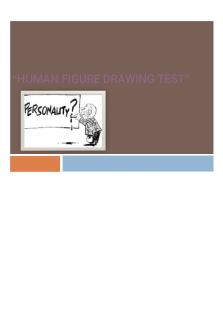
HFD Interpretation
- 42 Pages
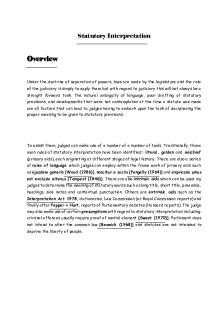
Statutory Interpretation
- 5 Pages

Statutory Interpretation
- 11 Pages
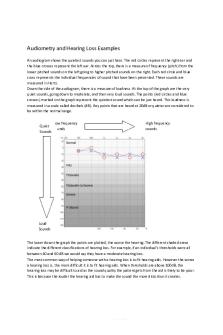
Audiogram Interpretation
- 12 Pages

Interpretation schreiben
- 2 Pages
Popular Institutions
- Tinajero National High School - Annex
- Politeknik Caltex Riau
- Yokohama City University
- SGT University
- University of Al-Qadisiyah
- Divine Word College of Vigan
- Techniek College Rotterdam
- Universidade de Santiago
- Universiti Teknologi MARA Cawangan Johor Kampus Pasir Gudang
- Poltekkes Kemenkes Yogyakarta
- Baguio City National High School
- Colegio san marcos
- preparatoria uno
- Centro de Bachillerato Tecnológico Industrial y de Servicios No. 107
- Dalian Maritime University
- Quang Trung Secondary School
- Colegio Tecnológico en Informática
- Corporación Regional de Educación Superior
- Grupo CEDVA
- Dar Al Uloom University
- Centro de Estudios Preuniversitarios de la Universidad Nacional de Ingeniería
- 上智大学
- Aakash International School, Nuna Majara
- San Felipe Neri Catholic School
- Kang Chiao International School - New Taipei City
- Misamis Occidental National High School
- Institución Educativa Escuela Normal Juan Ladrilleros
- Kolehiyo ng Pantukan
- Batanes State College
- Instituto Continental
- Sekolah Menengah Kejuruan Kesehatan Kaltara (Tarakan)
- Colegio de La Inmaculada Concepcion - Cebu


